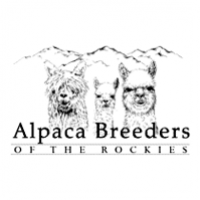The female alpacas bunch together in their pen, hoping to get a mouthful of grain from the proffered hand.
Black, brown, gray, white and every hue in between, the long-necked animals with huge brown eyes and fluffy fleece appear to smile when they peer up at a visitor.
“They all have their own personalities,” said Angi Lyngby-Cox, who owns the herd with her husband, Udo.
For instance, she calls a tall, brown female named Black Cherry “our little pig” because the alpaca spits at the others if they get in the way of the animal’s tasty morsels.
The day of the visit comes on the second Saturday of the month, on what the Mule Train Alpaca Ranch in Molt bills an “open barn.” The public is invited to come and see the docile, friendly animals, feed them grain and stop by a small store that contains a variety of alpaca fleece products.
The couple and their two daughters, Marileigh, 16, and Senja, 10, live on the 20-acre Mule Train Alpaca Ranch in Molt. Udo holds a full-time job and Angi a couple of part-time jobs in addition to running the ranch.
They own 42 alpacas, with 21 females and five babies in one pasture, and 15 males plus one llama named Diego, which acts as a “watch dog” against predators such as coyotes, in the other.
The females and males are segregated from each other, Lyngby-Cox said, because females are fertile year-round. It’s best for the offspring, called cria, to be born in warmer weather.
The family moved from Billings to the ranch just after Thanksgiving 2015, and a few months later got the first of their herd.
“I had kind of been looking into alpacas for quite a few years,” Lyngby-Cox said. “I grew up in the country on a hobby farm in South Dakota and I always wanted to get back into the country.”
She joined a spinning guild to learn how to turn fleece into yarn. She and her husband learned all they could about the animals before they purchased them.
One day last May, while learning how to spin, another of the guild members said alpaca owners in Roundup were moving and needed to sell their herd.
“We got them a week later, and I called a shearer a week after that,” Lyngby-Cox said.
The family held a shearing party, inviting friends to come and help with the process. Alpaca ranchers from Roberts also lent a hand.
Then Lyngby-Cox bought more alpacas from two ranches in California, boosting the herd to its present size. The alpaca community is very tight-knit, and Lyngby-Cox said she and her husband have gotten close to other ranchers.
“They’re very willing to help,” she said.
Asked what drew her to alpacas, Lyngby-Cox said they are relatively low-maintenance, eating less and requiring less water than horses, and they produce a fleece that is hypoallergenic and warmer, lighter and stronger than wool. The animals produce five to 10 pounds of fleece per year when they’re sheared.
They’re also intelligent, curious and relatively quiet animals.
“You can halter train them,” Lyngby-Cox said. “And there is something really charming about their faces.”
Their dung also makes great fertilizer. It can be placed on flowers without burning them, she said.
“It’s considered black gold because it’s one of the best fertilizers out there,” she said, laughing. “And it’s natural, which is great.”
Alpacas, members of the camelid family, like the larger llamas, are originally from Peru, Bolivia and Chile. They have been raised as domestic livestock for thousands of years.
They typically live 15 to 20 years, she said, and they come in two breed types: huacaya, which is woolier, and suri, which is silkier. All of the alpacas on the Mule Train Alpaca Ranch are the more common huacaya variety.
And though the animals do spit, it tends to be at each other rather than at humans. But sometimes a person can get caught in their crossfire.
Lyngby-Cox remembers one day when she was showered and ready to go and then she got hit with a shot to her face and hair.
“I had to take another shower before I left to go into town,” she said.
Senja, who enjoys spending time with the alpacas can easily name each member of the herd. One day she wound up with some spit in her mouth.
What did it taste like, Senja was asked.
“Disgusting,” she grimaced.
If you go
The Mule Train Alpaca Ranch, at 12780 Mule Trail Lane in Molt, is open to the public the second Saturday of the month, from 10:30 a.m. to 2 p.m., but the hours will grow longer once the weather is warmer. For directions, and to learn more about the ranch, visit www.facebook.com/muletrainalpacas/.
Black, brown, gray, white and every hue in between, the long-necked animals with huge brown eyes and fluffy fleece appear to smile when they peer up at a visitor.
“They all have their own personalities,” said Angi Lyngby-Cox, who owns the herd with her husband, Udo.
For instance, she calls a tall, brown female named Black Cherry “our little pig” because the alpaca spits at the others if they get in the way of the animal’s tasty morsels.
The day of the visit comes on the second Saturday of the month, on what the Mule Train Alpaca Ranch in Molt bills an “open barn.” The public is invited to come and see the docile, friendly animals, feed them grain and stop by a small store that contains a variety of alpaca fleece products.
The couple and their two daughters, Marileigh, 16, and Senja, 10, live on the 20-acre Mule Train Alpaca Ranch in Molt. Udo holds a full-time job and Angi a couple of part-time jobs in addition to running the ranch.
They own 42 alpacas, with 21 females and five babies in one pasture, and 15 males plus one llama named Diego, which acts as a “watch dog” against predators such as coyotes, in the other.
The females and males are segregated from each other, Lyngby-Cox said, because females are fertile year-round. It’s best for the offspring, called cria, to be born in warmer weather.
The family moved from Billings to the ranch just after Thanksgiving 2015, and a few months later got the first of their herd.
“I had kind of been looking into alpacas for quite a few years,” Lyngby-Cox said. “I grew up in the country on a hobby farm in South Dakota and I always wanted to get back into the country.”
She joined a spinning guild to learn how to turn fleece into yarn. She and her husband learned all they could about the animals before they purchased them.
One day last May, while learning how to spin, another of the guild members said alpaca owners in Roundup were moving and needed to sell their herd.
“We got them a week later, and I called a shearer a week after that,” Lyngby-Cox said.
Then Lyngby-Cox bought more alpacas from two ranches in California, boosting the herd to its present size. The alpaca community is very tight-knit, and Lyngby-Cox said she and her husband have gotten close to other ranchers.
“They’re very willing to help,” she said.
Asked what drew her to alpacas, Lyngby-Cox said they are relatively low-maintenance, eating less and requiring less water than horses, and they produce a fleece that is hypoallergenic and warmer, lighter and stronger than wool. The animals produce five to 10 pounds of fleece per year when they’re sheared.
They’re also intelligent, curious and relatively quiet animals.
“You can halter train them,” Lyngby-Cox said. “And there is something really charming about their faces.”
Their dung also makes great fertilizer. It can be placed on flowers without burning them, she said.
“It’s considered black gold because it’s one of the best fertilizers out there,” she said, laughing. “And it’s natural, which is great.”
Alpacas, members of the camelid family, like the larger llamas, are originally from Peru, Bolivia and Chile. They have been raised as domestic livestock for thousands of years.
They typically live 15 to 20 years, she said, and they come in two breed types: huacaya, which is woolier, and suri, which is silkier. All of the alpacas on the Mule Train Alpaca Ranch are the more common huacaya variety.
And though the animals do spit, it tends to be at each other rather than at humans. But sometimes a person can get caught in their crossfire.
Lyngby-Cox remembers one day when she was showered and ready to go and then she got hit with a shot to her face and hair.
“I had to take another shower before I left to go into town,” she said.
Senja, who enjoys spending time with the alpacas can easily name each member of the herd. One day she wound up with some spit in her mouth.
What did it taste like, Senja was asked.
“Disgusting,” she grimaced.



